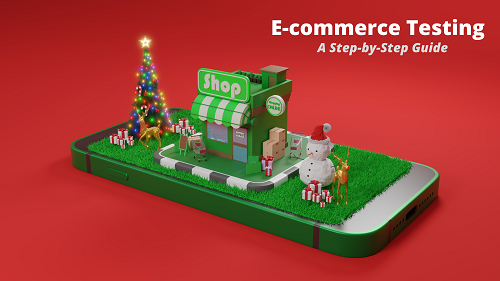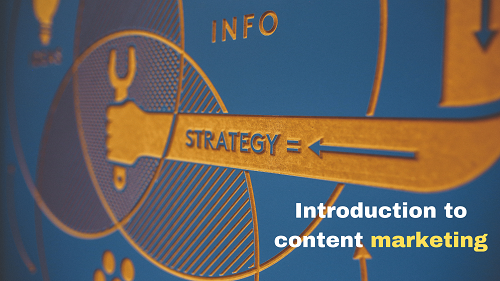The goal of any e-commerce store is to make the customer happy. And while you may be doing all you can to meet that goal, chances are that you’re missing something. That’s why it’s important to test your strategies and offerings against what your customers want and need. In this article, we’re going to cover many of the different aspects of e-commerce testing and how you can use each one to improve your business.
What is e-commerce testing?
E-commerce testing is a process of verifying the functionality of an e-commerce website or application. This can include testing the user interface, payment system, shipping system, and anything else that is involved in the e-commerce experience. E-commerce testing is important to ensure that customers have a positive experience when using your website or app, and to avoid any potential legal issues that could arise from an malfunctioning e-commerce system.
Why do we run tests?
There are many reasons why we might want to run tests on our e-commerce website. Maybe we’re launching a new feature and want to make sure it works properly. Maybe we’re noticing some strange behavior on the site and want to figure out what’s causing it. Or maybe we just want to verify that everything is working as it should be.
In any case, testing is an essential part of maintaining a high-quality e-commerce website. By running various tests, we can catch errors and fix them before they cause any major problems. We can also ensure that new features are working correctly before we roll them out to our users.
There are many different types of tests that we can run on an e-commerce website. Some of the most common include functional testing, load testing, and security testing. Each type of test serves a different purpose and can help us identify different kinds of issues.
Functional testing is used to verify that the website’s features are working correctly. For example, if we’re launching a new payment method, we’ll want to make sure that it’s working properly before making it available to our users. Load testing is used to test the website’s performance under heavy traffic conditions.
What are some popular types of e-commerce tests?
Load testing is one of the most popular types of e-commerce tests. This type of test measures the performance of an e-commerce site under normal conditions. Load testing can help identify potential bottlenecks and issues that could impact the user experience.
Another popular type of e-commerce test is functional testing. This type of test verifies that the site is functioning correctly and that all features are working as expected. Functional testing is important to ensure that the user experience is not impacted by bugs or other issues.
Security testing is also a critical type of e-commerce test. This type of test ensures that the site is secure and that sensitive data is protected. Security testing is important to protect both the customer and the business.
Performance testing is another key type of e-commerce test. This type of test measures how well the site performs under different conditions, such as high traffic or low bandwidth. Performance testing can help identify potential issues that could impact the user experience.
E-commerce testing is a critical part of ensuring a positive user experience. By load testing, functional testing, security testing, and performance testing, businesses can ensure that their site is ready for launch and will provide
How should you choose what to test?
There are a few key things to consider when deciding what to test in your ecommerce business. First, think about what your goals are for the site. What do you want customers to be able to do? What are your most important conversion funnel steps? These will be the areas you’ll want to focus on testing.
Next, consider what kinds of changes you can make that will have the biggest impact on your goals. Sometimes small changes can make a big difference, so don’t discount any potential improvements.
Finally, think about your budget and resources. Testing can be time-consuming and expensive, so you’ll need to prioritize the most important tests. Once you have a plan in place, you can start testing and see real results from your efforts.
How should you select a test metric to optimize?
There are a number of factors to consider when selecting a test metric to optimize. The most important factor is to select a metric that is closely aligned with your business goals. For example, if you are looking to increase conversion rates, then you would want to focus on a metric like conversion rate or average order value. Other factors to consider include the level of effort required to implement the change and the expected impact of the change.
Test Design Tips
E-commerce testing can be a challenge, but with these tips, you can create an effective test plan.
1. Define your objectives. What do you want to achieve with your testing? What are your goals?
2. Identify your audience. Who will be using your e-commerce site? What are their needs and expectations?
3. Choose the right tools. There are a variety of testing tools available, so choose the ones that best fit your needs.
4. Create a test plan. Outline what you need to test and when you plan to do it.
5. Execute your tests. Follow your plan and test each element of your e-commerce site.
6. Analyze the results. Look for any errors or issues that need to be addressed.
7. Make changes and retest as needed. Once you’ve fixed any problems, run your tests again to make sure everything is working correctly.
Conclusion
E-commerce testing is vital to the success of your online business. By following the steps outlined in this guide, you can be sure that your e-commerce website is functioning properly and providing an optimal experience for your customers. Don’t forget to test regularly and update your tests as your website evolves — by doing so, you can ensure that your e-commerce business continues to run smoothly and efficiently.
Also check: Top 7 cool gadget of 2022: newest gadget to hit the market in 2022






